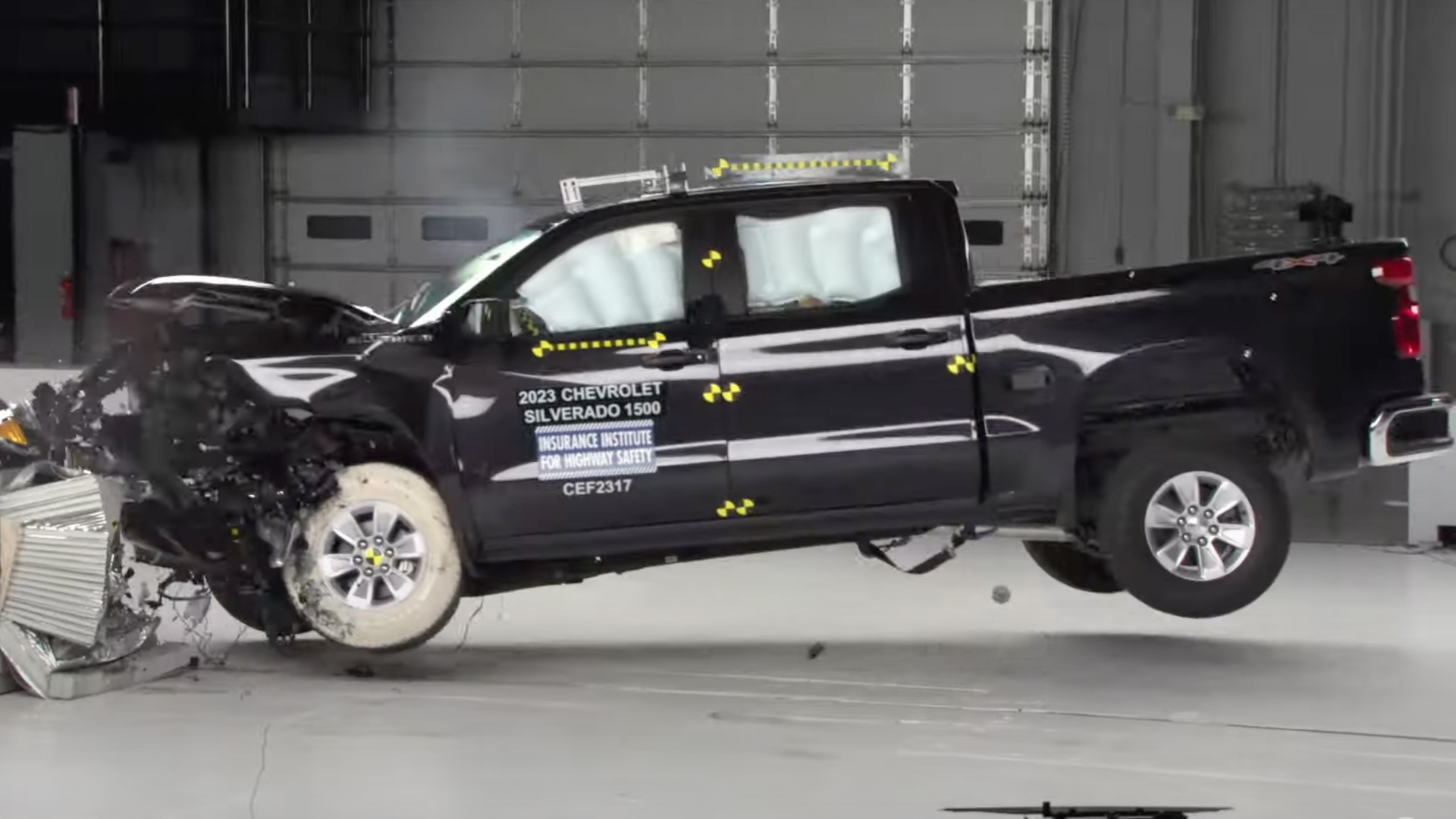

The Insurance Institute for Highway Safety recently revised its moderate overlap front crash tests with a focus on second-row safety for passengers smaller than the average American man. Vehicles across all classes have struggled with the new criteria, including full-size pickups, which the IIHS recently ran through the gauntlet. The results? All three American half-ton pickups scored “poor” marks, while the Toyota Tundra came away with a slightly better “marginal” rating.
The latest iteration of the moderate overlap front crash test situates a smaller dummy in the second row behind the driver. This dummy is intended to represent a small woman or 12-year-old child, as Automotive News explains. All four pickups failed this test because they weren’t able to keep this dummy properly positioned in the seat without striking the seat back ahead, or moving excessively in a manner that would likely translate to injuries. “Submarining,” when a passenger slides beneath the lap belt, was a common phenomenon.
“Measurements taken from the rear dummy indicated that chest injuries and head or neck injuries would be likely in the F-150 and Ram 1500,” the IIHS report reads. For the Silverado passenger, the risk of chest injury was “somewhat lower but still excessive,” while the Tundra’s dummy fared better in terms of head and neck injuries, but struggled with chest injuries as a consequence of “poor belt positioning.”

The easy, knee-jerk reaction to safety is “big car good, small car bad.” While larger vehicles tend to be safer than smaller ones provided all other factors are equal, size tells only part of the story, as the full-size pickups’ underwhelming performance in the moderate overlap front crash test reminds us.
The safety restraints for the driver and passenger seated in the front of those trucks worked as designed. Unfortunately, backseat passengers seem to suffer no matter the size of the vehicle they’re in, as the most popular models in the small sedan, small pickup truck, and minivan segments also graded poorly in the very same IIHS test the bigger pickups failed. Everything from the rake of the rear seat bottom to the placement of the seatbelt anchor can drastically affect a car’s ability to keep its rear occupants safe. Poor design in any area will increase the likelihood of injury.
Today, full-size pickups are veritable family haulers. Almost all have four doors, and buyers likely keep some peace of mind that in a crash with a smaller vehicle—as most other cars are likely to be when you’re behind the wheel of a Ram, F-150, Silverado, or Tundra—they may stand a better chance at walking away than they might in a crossover. But size and weight are only components of the larger equation. Restraint devices matter, and the ways in which they keep us safe can’t be replaced with tacking on mass and driver-assistance tech. Especially not if you’re sitting behind the driver.
Got tips? Send ’em to tips@thedrive.com